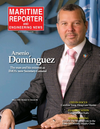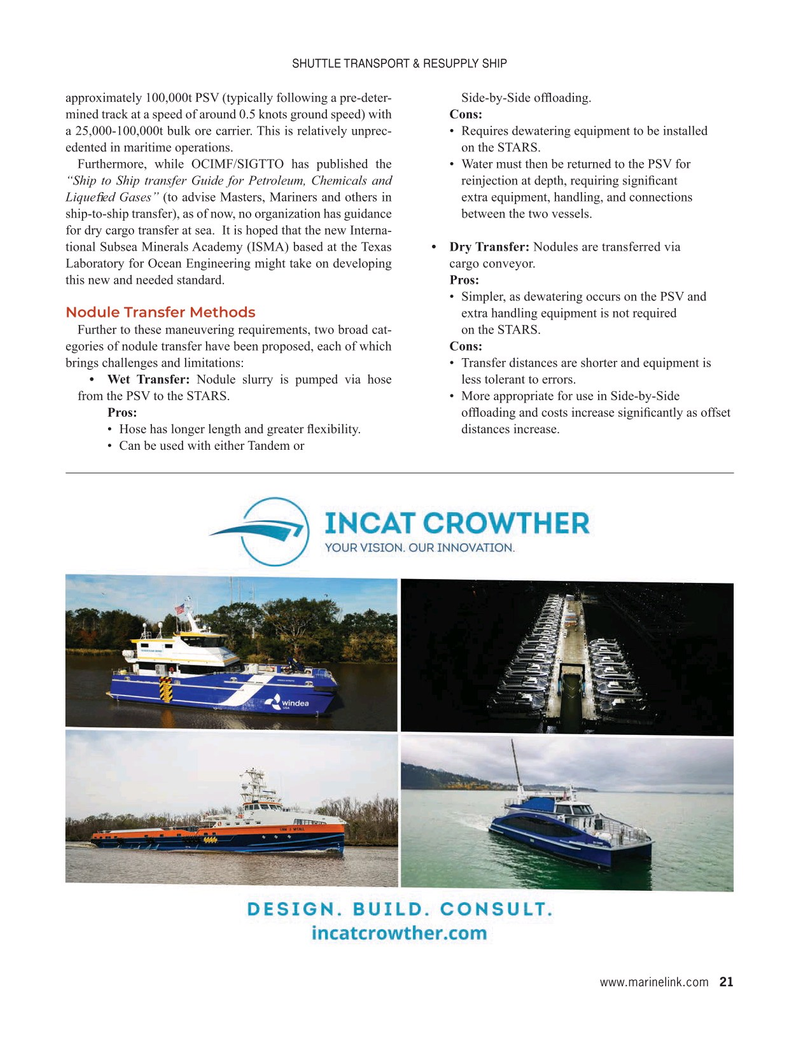
Page 21: of Maritime Reporter Magazine (May 2024)
Read this page in Pdf, Flash or Html5 edition of May 2024 Maritime Reporter Magazine
SHUTTLE TRANSPORT & RESUPPLY SHIP approximately 100,000t PSV (typically following a pre-deter- Side-by-Side of? oading.
mined track at a speed of around 0.5 knots ground speed) with Cons: a 25,000-100,000t bulk ore carrier. This is relatively unprec- • Requires dewatering equipment to be installed edented in maritime operations. on the STARS.
Furthermore, while OCIMF/SIGTTO has published the • Water must then be returned to the PSV for “Ship to Ship transfer Guide for Petroleum, Chemicals and reinjection at depth, requiring signi? cant
Lique? ed Gases” (to advise Masters, Mariners and others in extra equipment, handling, and connections ship-to-ship transfer), as of now, no organization has guidance between the two vessels.
for dry cargo transfer at sea. It is hoped that the new Interna- tional Subsea Minerals Academy (ISMA) based at the Texas • Dry Transfer: Nodules are transferred via
Laboratory for Ocean Engineering might take on developing cargo conveyor.
this new and needed standard. Pros: • Simpler, as dewatering occurs on the PSV and
Nodule Transfer Methods extra handling equipment is not required
Further to these maneuvering requirements, two broad cat- on the STARS.
egories of nodule transfer have been proposed, each of which Cons: brings challenges and limitations: • Transfer distances are shorter and equipment is • Wet Transfer: Nodule slurry is pumped via hose less tolerant to errors.
from the PSV to the STARS. • More appropriate for use in Side-by-Side
Pros: of? oading and costs increase signi? cantly as offset • Hose has longer length and greater ? exibility. distances increase.
• Can be used with either Tandem or www.marinelink.com 21
MR #5 (18-33).indd 21 5/3/2024 8:29:21 AM

 20
20

 22
22
